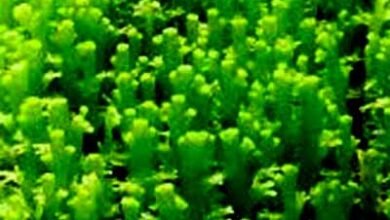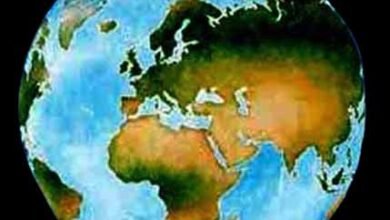
|
1. Which river did the Egyptian civilization develop? = Nile River. 2. What was the king of Egypt called? = Pharaohs. 3. What was the important occupation of the Egyptians? = Agriculture. 4. What are the achievements of Egyptian civilization? = Excavation, surveying, and construction techniques that allowed for the building of the giant pyramids, temples, and obelisks; a system of mathematics, a practical and efficient medical system, irrigation systems, and agricultural production techniques, the first known vessels, Egyptian pottery and glass technology. 5. Who has the largest pyramid in ancient Egypt and who built it? = Pharaoh Khufu was the first Egyptian king to build a pyramid at Giza. 6. What is a pyramid called? = A pyramid is a three-dimensional shape. A pyramid has a polygonal base and flat triangular faces that join at a common point called the apex. The pyramid is formed by joining the bases to the apex. 7. Which country the art of kite flying was first developed? = China. 8. The calendar of China was made up of which calculations? = Solar and Lunar calculations. 9. Who is known as the Bismarck of China? = Shi-Huang T. 10. Which country was the first to develop the scientific method of recruitment in the service, the circulation of coins, the circulation of paper currency, the use of tea, and the silk industry? = China. 11. Mesopotamia means? = Land between Rivers. 12. Which rivers did the Mesopotamian civilization develop? = Tigris and Euphrates rivers. 13. What is the modern name of Mesopotamia? = Iraq. 14. Where did the Mesopotamian civilization develop the most? = Sumer (Iraq). 15. What was the Dev temple called in the Mesopotamian Civilization? = Zigurat (heaven’s hill). 16. Who wrote the history of Mesopotamia? = Babylonian priest Berosos. 17. The writing system was first developed by the residents of = Ancient Mesopotamia. 18. Whose clothes did the people of Mesopotamia wear? = The robes and tunics of the upper class were made of linen and those of the lower class of wool. 19. What was the main occupation of the inhabitants of Mesopotamia? = Agriculture. 20. Panchang was invented by the residents of where? = The inhabitants of ancient Babylon. 21. Where was glass first used? = Mesopotamia. 22. Who built the Sumerian Civilization? = Dravidian. 23. Which metal was used more by people in the Sandhava civilization? = Bronze. 24. Who was the first to create the Code of Law in the world? = Hammuravi. 25. The decimal system of counting is the contribution of which civilization? = Indus Valley Civilization. 26. Which culture did the alphabet first appear in the world? = Phoenicia. 27. The period in which Rigveda was composed is known as which period? = Early Vedic Age. 28. What is the name of the period in which other Vedas were composed apart from Rigveda? = Vedic Period. 29. What was the basis of the Varna system in the Rigvedic period? = Basis of work. 30. What is the group of Aryans called? = People. ========== ========= =========== वैदिक सभ्यता एवं संस्कृति—
1. मिस्र की सभ्यता का विकास किस नदी के किनारे हुआ था? = नील नदी. 2. मिस्र के राजा को क्या कहा जाता था? = फराओं. 3. मिस्र के निवासियों का महत्वपूर्ण व्यवसाय क्या था? = कृषि. 4. मिस्र की सभ्यता की उपलब्धियां क्या हैं? = उत्खनन, सर्वेक्षण और निर्माण की तकनीक जिसने विशालकाय पिरामिड, मंदिर और ओबिलिस्क के निर्माण में मदद की; गणित की एक प्रणाली, एक व्यावहारिक और कारगर चिकित्सा प्रणाली, सिंचाई व्यवस्था और कृषि उत्पादन तकनीक, प्रथम ज्ञात पोत, मिस्र के मिट्टी के बर्तन और कांच प्रौद्योगिकी. 5. प्राचीन मिस्र में सबसे बड़ा पिरामिड किसका है तथा इसे किसने बनवाया था? = फिरौन खुफू गीज़ा में पिरामिड बनवाने वाले पहले मिस्र के राजा थे. 6. पिरामिड किसे कहते है? = पिरामिड एक त्रि-आयामी आकार है. पिरामिड में एक बहु-कोणीय आधार और सपाट त्रिकोणीय चेहरे होते हैं, जो एक सामान्य बिंदु पर जुड़ते हैं जिसे शीर्ष कहा जाता है. आधारों को शीर्ष से जोड़कर पिरामिड बनाया जाता है. 7. पतंग उड़ाने की कला किस देश में सर्वप्रथम विकसित हुई थी? = चीन. 8. चीन का पंचांग किन-किन गणनाओं को मिलाकर बनाया गया था? = सौर और चन्द्र गणनाओं. 9. चीन का विस्मार्क किसे कहा जाता है? = शी-हुआंग टी. 10. सेवा में भर्ती का वैज्ञानिक तरीका विकसित करने वाला, सिक्के का प्रचलन, कागजी मुद्रा का प्रचलन, चाय का प्रयोग, रेशम उधोग सर्वप्रथम किस देश में प्रारम्भ हुआ? = चीन. 11. मेसोपोटामिया का अर्थ होता है? = नदियों के बीच की भूमि. 12. मेसोपोटामिया की सभ्यता का विकास किस नदियों के किनारे हुआ था? = दजला और फरात नदी. 13. मेसोपोटामिया का आधुनिक नाम क्या है? = इराक. 14. मेसोपोटामिया सभ्यता का विकास सबसे ज्यादा कहाँ हुआ था? = सुमेर( इराक). 15. देव मंदिर को मेसोपोटामिया सभ्यता में क्या कहा जाता था? = जिगुरत (स्वर्ग की पहाड़ी). 16. मेसोपोटामिया का इतिहास किसने लिखा? = बेबीलोन के पुरोहित बेरोसोस. 17. लेखन-पद्धति का विकास सबसे पहले कहाँ के निवासियों ने किया था? = प्राचीन मेसोपोटामिया. 18. मेसोपोटामिया के निवासी किसके कपड़े पहनते थे? = उच्च वर्ग के वस्त्र और अंगरखे लिनन से बने होते थे और निम्न वर्ग के ऊन से. 19. मेसोपोटामिया के निवासियों का मुख्य व्यवसाय क्या था? = कृषि. 20. पंचांग का आविष्कार कहाँ के निवासियों ने किया था? = प्राचीन बेबीलोन के निवासियों ने. 21. शीशे का प्रयोग सर्वप्रथम कहाँ हुआ था? = मेसोपोटामिया. 22. सुमेरी सभ्यता का निर्माण किसने किया था? = द्रविड़. 23. सैंधव-सभ्यता में लोग किस धातु का अधिक प्रयोग करते थे? = कांसा. 24. विश्व में सर्वप्रथम विधि-संहिता बनाने वाला कौन था? = हम्मूरावी. 25. गिनती की दाशमिक प्रणाली किस सभ्यता की देन है? = सिंधु घाटी सभ्यता. 26. विश्व में वर्णमाला सर्वप्रथम किस संस्कृति में हुआ? = फोनीशियन, मिस्रवासी, असीरियन, क्रेटन और हिब्रू. 27. जिस काल में ऋग्वेद की रचना हुई, उसे किस काल को किस नाम से जाना जाता है? = प्रारंभिक वैदिक युग. 28. किस काल में ऋग्वेद के अतिरिक्त अन्य वेदों की रचना हुई थी उसे क्या कहते हैं? = वैदिक काल. 29. ऋग्वैदिक काल में वर्ण व्यवस्था का आधार क्या था? = कार्य के आधार पर. 30. आर्यों के समूह को क्या कहा जाता है? = जन.
|






